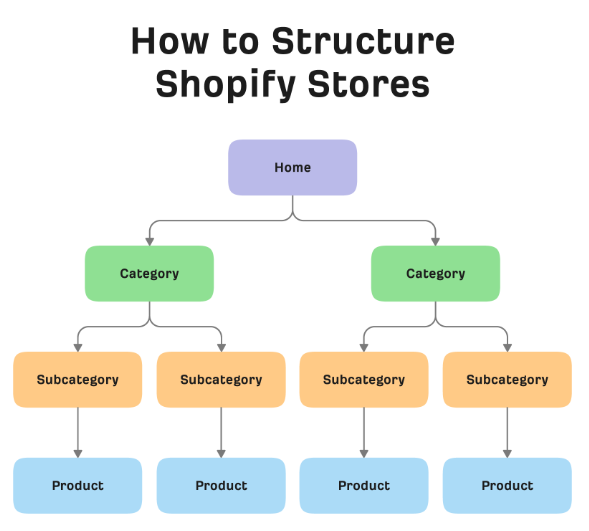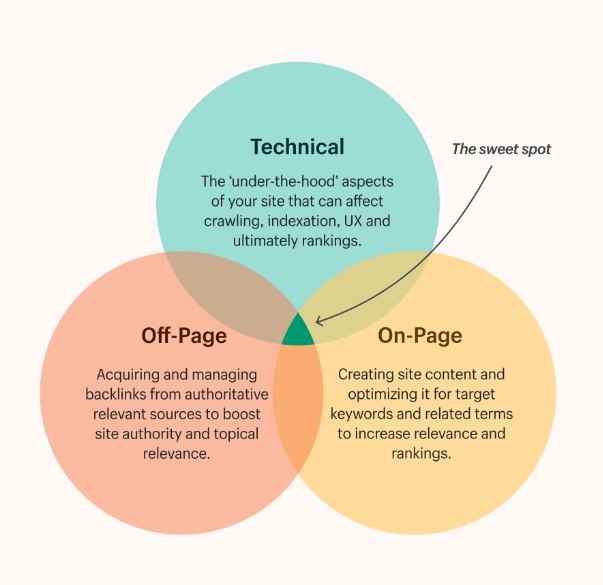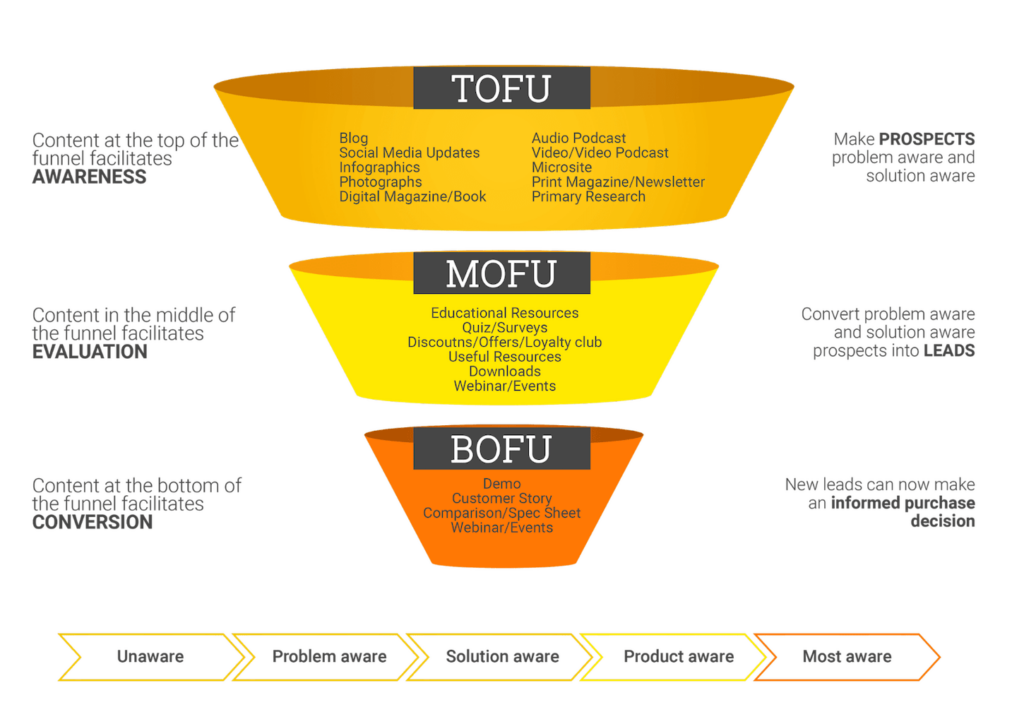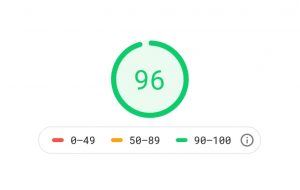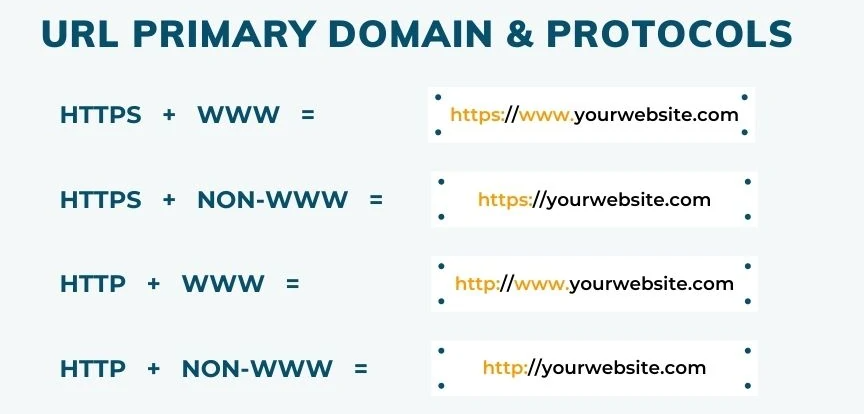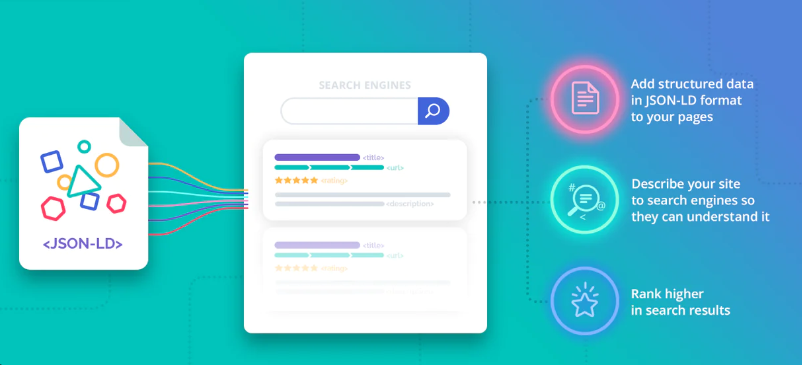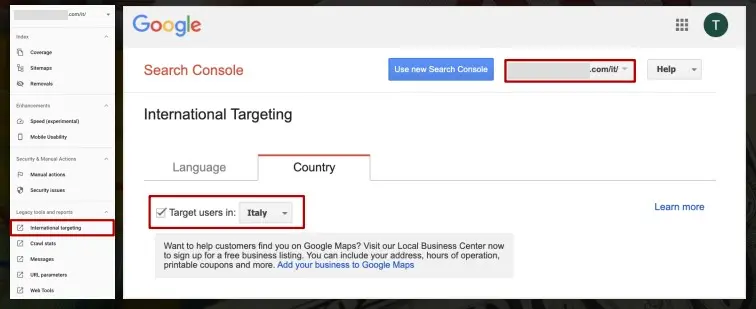And so, you’ve set up your Shopify store. Your products are ready to sell, and your Shopify website design looks fabulous.
But what about driving organic traffic?
SEO (Search Engine Optimisation) is the secret sauce that can propel your Shopify store to ecommerce stardom.
This comprehensive guide offers over 101 tips to transform your Shopify store into an SEO powerhouse.
But let’s get started, shall we?
Shopify SEO Basics
On-Page Shopify SEO
On-page SEO for Shopify is all about optimising individual elements within your website to make it more search-engine friendly and user-centric.
From crafting compelling meta titles and descriptions that entice clicks, to integrating relevant keywords within high-quality product descriptions, on-page SEO serves as the backbone of your Shopify store’s visibility.
Additional tactics include proper header tag hierarchy for easy readability, incorporating ALT text in images for better accessibility, and leveraging internal linking to improve site navigation.
Don’t overlook these foundational elements; they can substantially impact your store’s ranking on search engines like Google, leading to increased traffic and conversions.
- Optimise Meta Titles: Make sure each page has a unique title that includes the target keyword.
- Craft Effective Meta Descriptions: Write compelling descriptions that encourage clicks from search engine results.
- Include ALT Text for Images: Add descriptive text to your images to improve accessibility and SEO.
- Use H1, H2, H3 Headers Wisely: Organise your content with heading tags, making it more scannable and SEO-friendly.
- Write High-Quality Product Descriptions: Informative and keyword-rich descriptions can make a difference in attracting organic traffic.
- Use Internal Linking: Link related content within your site to help users navigate and to spread link juice.
- Prioritise Above-The-Fold Content: Place important content at the top of the page to engage users right away.
- Leverage Keywords in URLs: Include relevant keywords in your URLs to make them more search-engine friendly.
- Optimise for Featured Snippets: Create content that answers common questions to appear in Google’s featured snippets.
- Use LSI Keywords: Include related terms to your main keywords to give context to search engines.
Off-Page Shopify SEO
Off-page SEO for your Shopify store involves a myriad of activities aimed at boosting your website’s credibility and authority, ultimately improving its position in search engine rankings.
This can include acquiring high-quality backlinks from reputable sites in your industry, increasing social media engagement to amplify your content’s reach, and leveraging customer reviews to build trust.
Guest blogging and influencer partnerships can also serve as effective off-page strategies, providing you with valuable backlinks and broadening your audience.
And don’t underestimate the power of public relations; being featured in press releases and articles can significantly enhance your brand’s reputation, helping you gain not just links but also consumer trust.
- Build High-Quality Backlinks: Get links from reputable sites to boost your site’s authority.
- Social Media Engagement: Consistently share content and engage with your audience on social media platforms.
- Guest Blogging: Write content for other blogs to get backlinks and increase your brand’s visibility.
- Influencer Outreach: Connect with influencers in your industry for product mentions or collaborations.
- Leverage Public Relations: Get featured in news articles and press releases to increase your brand’s authority.
- Submit Your Site to Directories: Use web directories to increase your online presence.
- Use Social Bookmarking: Submit your content to social bookmarking sites for more visibility.
- Craft Compelling Infographics: Create and share infographics to attract backlinks and social shares.
- Acquire Reviews and Testimonials: Collect customer reviews to boost credibility and local SEO.
- Create a Google My Business Page: Set this up to appear in local search results and improve local SEO.
Content Marketing
Content marketing for Shopify is a strategic approach focused on creating and distributing relevant, valuable content to attract and engage a clearly-defined audience, with the ultimate aim of driving profitable customer action.
In the eCommerce context, this might include blog posts that answer frequent customer questions, videos showcasing product features, or even interactive quizzes that guide users to the best products for their needs.
Quality content not only improves your store’s SEO but also establishes your brand as an industry authority.
So whether you’re offering how-to guides, tips and tricks, or insightful articles, remember that your content should provide real value, helping to nurture relationships and turn casual browsers into loyal customers.
- Start a Blog: Create valuable, relevant content to engage customers and improve SEO.
- Use Long-Tail Keywords in Blog Topics: Optimize your posts for specific phrases that have lower competition.
- Optimize Blog Metadata: Ensure each blog post has unique meta titles and descriptions.
- Use Video Content: Videos can increase user engagement and are favoured by search engines.
- Create How-to Guides and Tutorials: Instructional content can position you as an expert in your field.
- Conduct Webinars: Interactive sessions can engage potential customers and boost your brand’s authority.
- Develop Customer Case Studies: Showcase how your products or services have helped customers.
- Use Interactive Content like Quizzes: Engage customers with interactive features that also yield customer data.
- Create E-books and Whitepapers: Long-form content can establish you as an authority and generate leads.
- Run Contests and Giveaways: Boost engagement and generate buzz around your brand.
Technical Shopify SEO
Technical SEO for Shopify is the nuts and bolts that hold your online store’s performance together, often operating behind the scenes to ensure a seamless user experience.
This encompasses a range of practices, from site speed optimisation—which involves compressing images and leveraging Shopify’s CDN—to implementing schema markup to make your product pages more readable by search engines.
Additionally, you’ll want to focus on mobile optimisation, given the growing number of mobile shoppers, as well as fix any broken links using 301 redirects.
Properly executed, technical SEO ensures that your Shopify store is easily crawlable and indexable, which not only helps in better search engine rankings but also offers a smoother, faster shopping experience for your customers.
- Optimize Site Speed: Faster load times improve user experience and SEO rankings.
- Enable Compression: Use gzip compression to speed up load times.
- Optimize CSS and JS files: Minimize code to reduce load time.
- Use Lazy Loading for Images: Load images as users scroll down to improve page speed.
- Use Shopify’s CDN: Leverage Shopify’s content delivery network for better global accessibility.
- Implement 301 Redirects for Broken Links: Redirect outdated URLs to relevant pages.
- Mobile Optimization: Ensure your website is responsive for a mobile-friendly experience.
- Use AMP for Mobile Pages: Accelerated Mobile Pages load faster, offering a better user experience.
- Add an SSL Certificate: Secure sites are trusted more by search engines.
- Use Clean and Simple URL Structures: URLs should be easy to read and contain keywords.
Structured Data
Technical SEO on Shopify serves as the underlying framework that optimises your online store for search engine crawling and indexing.
It’s essentially the backstage crew that ensures the show goes on smoothly—making sure your website loads quickly by utilising compressed images and Shopify’s CDN, employing schema markups for enhanced search engine readability, and optimizing for mobile platforms to cater to an ever-increasing mobile user base.
It also includes crucial practices such as implementing 301 redirects for broken links and setting up an SSL certificate for a secure user experience.
Done right, technical SEO not only improves your store’s search engine rankings but also significantly elevates the user experience, making it easier for customers to navigate, shop, and ultimately convert.
- Implement Schema Markup: Help search engines understand your website structure and content.
- Use Rich Snippets: These offer more info in search results, such as ratings, improving click-through rates.
- Add Breadcrumbs: These improve user navigation and help search engines understand site structure.
- Use JSON-LD for Structured Data: This lightweight format simplifies the process of including meta data.
- Optimize for Local Business Schema: This is essential for businesses targeting local customers.
- Optimize for Product Schema: Provide detailed product information in search engine results.
- Use FAQ Schema: This allows for your frequently asked questions to appear directly in search results.
- Implement Organization Schema: This provides corporate information like logo, social profiles, and contact info.
- Use Review Markup: This allows your customer reviews to appear in search results.
- Article Markup for Blogs: Improve visibility of your blog posts in search engine results.
International SEO
International SEO is all about optimising your Shopify store for search engines beyond your home country, targeting different languages and regions to broaden your market reach.
It involves implementing hreflang tags to specify language and regional targeting, creating geo-specific landing pages with localised content, and even adapting your store’s currency and units of measurement based on the user’s location.
Additionally, considering the use of country-specific domains or subdomains can add an extra layer of local credibility.
By adopting a well-crafted international SEO strategy, you can not only improve your visibility in foreign search engines but also offer a more personalised shopping experience to a global audience.
And with eCommerce increasingly becoming a global marketplace, this can provide you with the competitive edge you need.
- Implement Hreflang Tags: These tags tell search engines what languages you are targeting.
- Use Geo-Targeting: Utilise Google Search Console to target specific countries.
- Optimize for Local Keywords: Include local phrases and slang to appeal to each target region.
- Create Local Landing Pages: Tailor pages for different geographic locations.
- Translate Content for International Audiences: Localise your website to cater to non-English speakers.
- Localize Currency and Units: Adjust these according to the geographic location of the user.
- Use Country-Specific Domains: These improve trust and local SEO.
- Use Subdomains for Regions: Organise your site based on geographic regions.
- Create Multilingual Meta Tags: Make meta tags understandable for multiple languages.
- Adjust Time-Zone for International Customers: Ensure your promotions align with local time zones.
Keyword Research
Keyword research in the context of Shopify is a foundational step that can make or break your SEO strategy.
The aim is to identify specific words and phrases that potential customers are using to search for products or services similar to yours. Tools like Google Keyword Planner, SEMrush, or even Shopify’s in-built search analytics can help you uncover these valuable keywords.
From short-tail to long-tail, and even LSI (Latent Semantic Indexing) keywords, your goal should be to find a balanced mix that can be naturally incorporated into your product titles, descriptions, blog posts, and even URL slugs. But don’t just focus on search volume; consider the user intent behind each keyword and its relevance to your offerings.
By doing so, you’re not just chasing rankings, but you’re making your Shopify store more visible to users who are likely to convert.
- Use Google Keyword Planner: A fundamental tool for keyword research.
- Utilise Google Trends: Check the popularity of certain search queries over time.
- Leverage Competitor Keywords: Research competitors to find what keywords they are ranking for.
- Use Long-Tail Keywords: These are easier to rank for and highly specific.
- Consider User Intent: Think about what your customers are actually looking for.
- Evaluate Keyword Difficulty: Use tools to assess how hard it would be to rank for certain keywords.
- Optimize for Voice Search: Include natural phrasing for increasingly popular voice searches.
- Use Keywords in Subheadings: This adds another layer of optimisation.
- Don’t Ignore Negative Keywords: Filter out irrelevant queries in paid campaigns.
- Include Seasonal Keywords: Use timely keywords for seasonal promotions or trends.
Conversion Rate Optimisation (CRO)
Conversion Rate Optimisation (CRO) in Shopify is the tactical art of converting casual browsers into paying customers.
It’s not enough to simply drive traffic to your store; you have to persuade visitors to take specific actions, such as making a purchase, signing up for a newsletter, or sharing your content.
A/B testing plays a crucial role here, allowing you to experiment with different elements like call-to-action buttons, product descriptions, and even checkout processes to see what resonates most with your audience.
Other CRO techniques might include implementing exit-intent popups to capture leads, using high-quality product images for a more appealing visual experience, or enabling live chat support for real-time assistance.
But remember, the end goal isn’t just to increase conversions; it’s to offer a more streamlined and satisfying user experience that keeps people coming back for more.
- Implement Exit-Intent Popups: Capture leads who are about to leave your site.
- Use High-Quality Product Images: Visuals can significantly impact a buyer’s decision.
- Enable Live Chat Support: Immediate assistance can improve user satisfaction and conversions.
- Optimize Call-to-Action Buttons: Make them prominent and clear.
- Leverage Customer Testimonials: Social proof can improve credibility.
- Use Countdown Timers for Sales: Create urgency to encourage purchases.
- A/B Test Landing Pages: Test different versions to find out what converts best.
- Personalize User Experience: Use data to offer personalised recommendations.
- Implement Sticky Add-to-Cart Button: Make it easy for users to take the key action.
- Utilize Social Proof: Display reviews, ratings, or number of sales.
Analytics and Monitoring
Analytics and Monitoring in the context of Shopify SEO are the navigational instruments that guide your journey towards eCommerce success.
By setting up tools like Google Analytics and Google Search Console, you can gain invaluable insights into user behaviour, website performance, and even your store’s overall health.
These platforms allow you to track metrics such as conversion rates, bounce rates, and average session duration, offering a nuanced understanding of how visitors interact with your site.
Monitoring keyword rankings can help you adapt your SEO strategies in real-time, while site speed checks ensure that your user experience is up to par.
Regularly auditing your backlink profile can also identify opportunities or flag potential issues before they become problematic.
In essence, analytics and monitoring equip you with the data you need to make informed decisions, fine-tune your strategies, and ultimately boost both your search engine rankings and your bottom line.
- Set Up Google Analytics: Monitor user behaviour and website performance.
- Monitor Keyword Rankings: Keep track of how your keywords are performing.
- Use Google Search Console: A free tool to check indexing status and optimize site visibility.
- Track User Behaviour: Understand how users interact with your website.
- Measure Conversion Rates: Regularly check this to see if your strategies are yielding results.
- Monitor Site Speed: Slow load times can severely impact user experience and SEO.
- Regularly Update Content: Keep content fresh and relevant.
- Monitor Backlink Profile: Keep an eye on your incoming links to ensure they’re of high quality.
- Analyze Bounce Rates: High bounce rates can indicate poor user experience.
- Set Up Ecommerce Tracking in Google Analytics: Monitor product performance and user transactions.
Shopify-Specific
Shopify-Specific SEO refers to optimisation techniques that are tailored to the particularities and functionalities of the Shopify platform.
This includes leveraging built-in features like automated XML sitemaps, URL structures, and meta fields, as well as taking advantage of Shopify-exclusive apps designed to improve SEO.
Because Shopify hosts your store, some elements like server speed are taken care of, allowing you to focus on other crucial aspects like keyword-rich product titles, ALT text for images, and streamlined site architecture.
Additionally, Shopify’s mobile-first approach is a boon for SEO, as it naturally aligns with Google’s mobile-first indexing.
And let’s not forget about Shopify’s range of SEO-friendly themes that can give you a head start right out of the gate.
By mastering Shopify-specific SEO, you’re not just playing to the strengths of the platform; you’re setting up your online store for sustainable growth and success.
- Utilise Shopify SEO Apps: These can automate many SEO tasks.
- Use Shopify’s Robots.Txt File Wisely: Customise it to control what search engines should index.
- Leverage Shopify’s In-Built SEO Features: Use the platform’s SEO-friendly features to your advantage.
- Utilise Shopify’s Image Optimisation: Compress images within the platform.
- Use Shopify Themes that are SEO-Friendly: Choose themes that are optimized for SEO.
- Use Canonical Tags in Shopify: Prevent duplicate content issues.
- Utilise Shopify’s Bulk Editor for Meta Data: Manage meta data more efficiently.
- Use Shopify’s Sitemap.Xml Feature: This auto-generated feature helps search engines crawl your site.
- Leverage Shopify’s Automatic Redirects: For out-of-stock or deleted items, use redirects to relevant pages.
- Utilise Shopify’s Analytics Features: Make informed decisions based on comprehensive data.
Bonus Tip
- Keep Learning: SEO is an ever-changing field. To stay ahead, you’ll need to keep updating your knowledge.
And there you have it! With these detailed 101 tips, you’re well-equipped to optimise your Shopify store for SEO success. Remember, SEO is an ongoing journey, not a destination. Keep optimizing, measuring, and adapting. Good luck!
